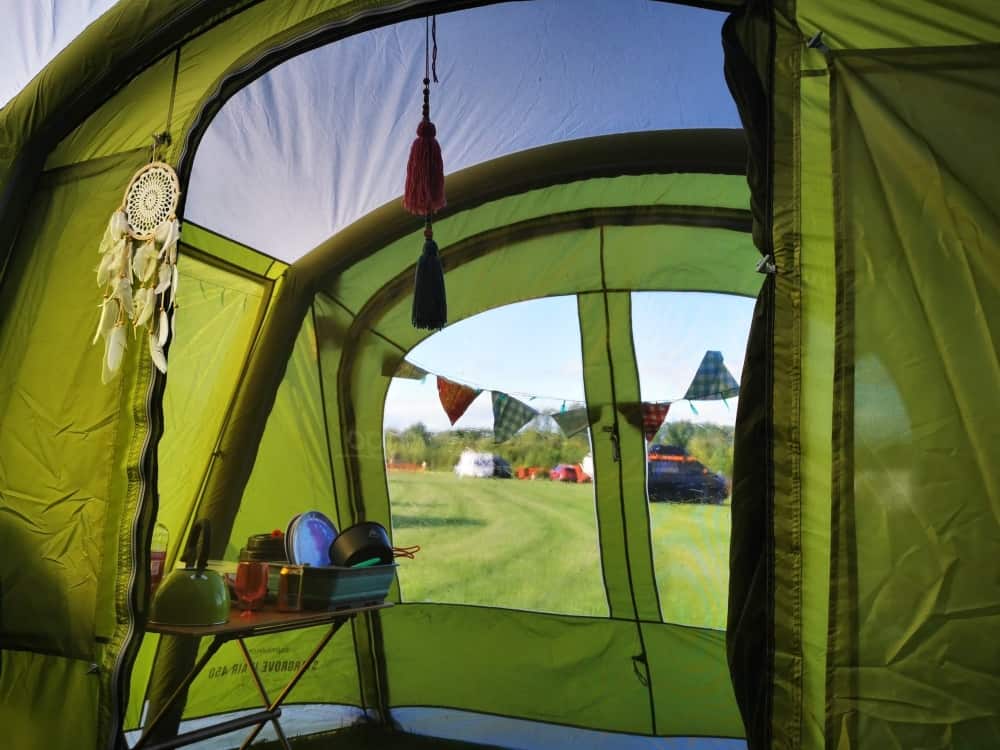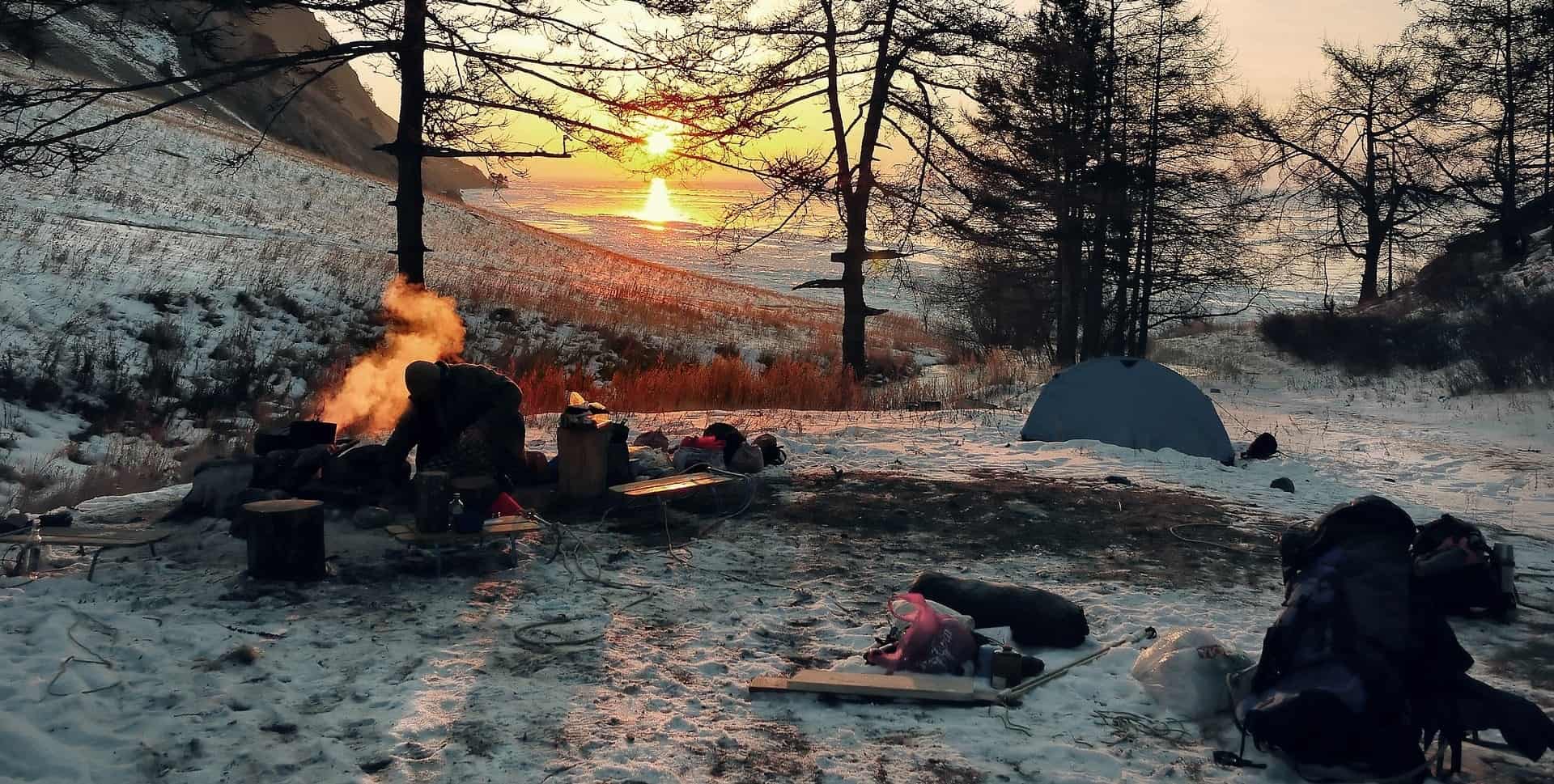Although camping is an excellent way to reconnect with nature and unplug from the stresses of modern life, it does come with several significant challenges.
One of the biggest obstacles to overcome is a lack of centralized heat. Unfortunately, when camping in the fall or winter, staying warm is a constant struggle.
Fortunately, we’re here to help. We’ve compiled a list of the five ways that you can keep your tent warm while you sleep.
If you’re wondering how to make a tent warmer, check out our tips so you can tackle the next day well-rested and ready for any challenge.
Step One: Use a Full-Sized Tent Tarp or Rain Fly
Regardless of the type of tent material you choose (e.g., nylon, polyester, or canvas), it will quickly lose heat. Unfortunately, most tent fabrics are designed for breathability and airflow, not insulation.
One quick way to alleviate this problem is to add a full-size tarp or rain fly on top of your tent. By adding a second layer, you can trap more heat so that it doesn’t dissipate as quickly.
Most modern tents come with a rain fly, but it might only cover half of the structure. For best results, we recommend adding a tarp that can cover each side from top to bottom. You will need to create a makeshift entrance to get in and out, but that’s a small price to pay to stay warm at night.
Related: Need a big tent? No problem. Check out our review of the best 12 person tent.
Step Two: Insulate Between the Tarp and the Tent Itself
While a tarp can help trap heat, it’s not designed for that purpose.
So, to add even more warmth to your tent’s interior, we recommend adding some insulation between the two layers. You can use foam pads, newspaper, or other materials as long as they will stay dry and trap heat.
An emergency blanket can do the trick if you don’t have any thick materials. Best of all, it’s lightweight and easy to carry in and out of your campsite.
Step Three: Use a Portable Tent Heater
As a rule, you never want to bring an open flame inside your tent, whether it’s a candle or stove. Instead, you want something that creates heat without becoming a potential hazard. Portable tent heaters allow you to control the interior temperature so that you can stay toasty no matter how cold it gets outside.
Typically, you can find a propane heater that will work for tents. However, before setting one up inside your tent, be sure that you have plenty of ventilation and that the machine comes with CO2 and tip-over sensors.
This way, you can avoid creating a dangerous environment while you sleep.

Step Four: Ventilate Your Tent at Night
At first, it might seem counterintuitive to vent your tent when trying to keep it warm. However, the main reason to rely on ventilation is to avoid condensation. Water traps heat and disperses it, meaning that you have to work harder to maintain the interior temperature.
So, using vents at the top of your tent can help you avoid this problem. Even if you don’t have a portable tent heater, ventilation is crucial for staying warm.
Step Five: Use Ground Insulation
Just as frigid air and cold weather can sap heat from your tent, so can the cold ground. Even if you’re not sitting on top of snow and ice, dirt can be a massive heat sink.
So, you should put some kind of ground insulation between the tent and the earth. As with the sides of your tent, an emergency blanket works well as a fast and easy solution.
Otherwise, if you can lift the tent off the ground using a wooden platform, that would be ideal. If both options are impossible, you can use blankets and other materials inside on the tent floor to help keep warm.
Bonus: Dress Warmly
Finally, the best way to stay warm when winter camping is to dress appropriately. Wearing socks, hats, and thermal underwear at night will help you stay toasty inside your sleeping bag.
Speaking of sleeping bags, make sure that yours is rated for colder weather. There’s a big difference between summer and winter bags, so don’t make that mistake.
With these tips, you can enjoy camping life all year long. Happy travels!
Next up: New to camping and find setting up a tent a handful? Find out how to use guy lines properly.
